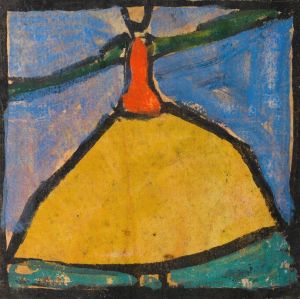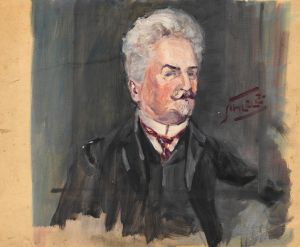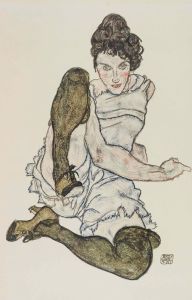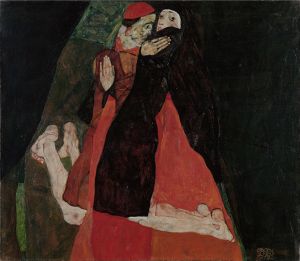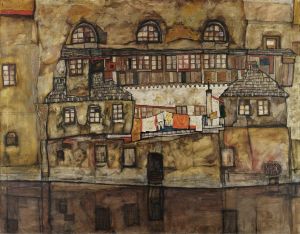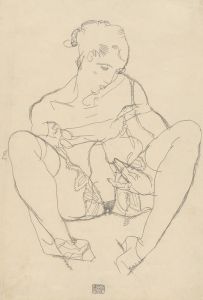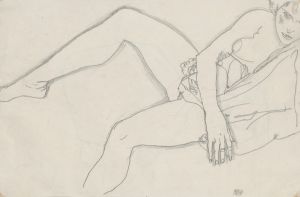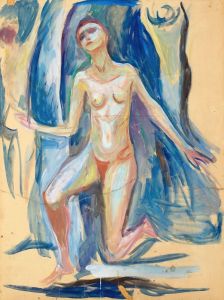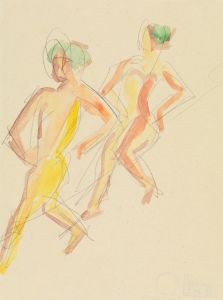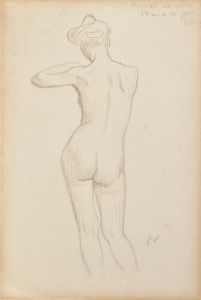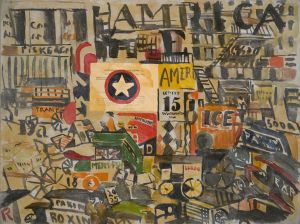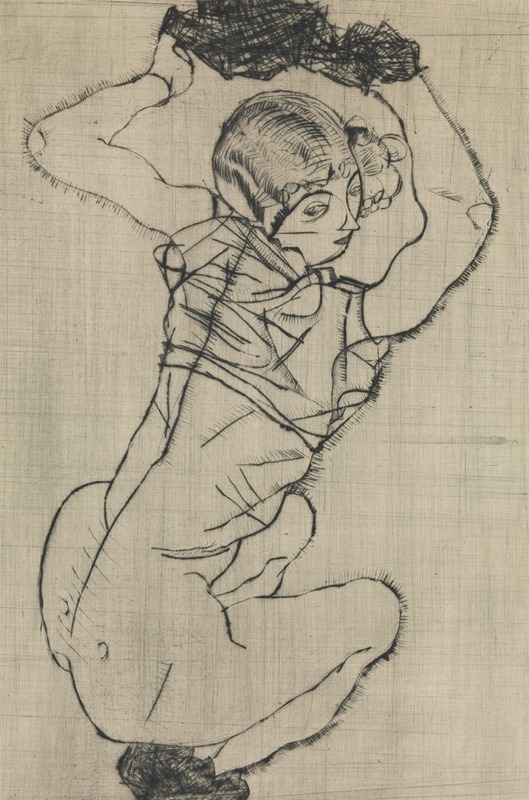
Squatting Woman
A hand-painted replica of Egon Schiele’s masterpiece Squatting Woman, meticulously crafted by professional artists to capture the true essence of the original. Each piece is created with museum-quality canvas and rare mineral pigments, carefully painted by experienced artists with delicate brushstrokes and rich, layered colors to perfectly recreate the texture of the original artwork. Unlike machine-printed reproductions, this hand-painted version brings the painting to life, infused with the artist’s emotions and skill in every stroke. Whether for personal collection or home decoration, it instantly elevates the artistic atmosphere of any space.
Squatting Woman is a watercolor and pencil drawing created by Austrian artist Egon Schiele in 1914. Schiele, a prominent figure in the Expressionist movement, is known for his raw, emotive, and often provocative depictions of the human form. This artwork exemplifies his distinctive style, characterized by bold lines, exaggerated poses, and an unflinching exploration of human vulnerability and sexuality.
The drawing portrays a nude woman in a squatting position, her body contorted in a way that emphasizes angularity and tension. Schiele's use of line is both precise and expressive, capturing the physicality of the pose while also conveying a sense of psychological intensity. The figure's gaze is direct and confrontational, a hallmark of Schiele's work that challenges traditional notions of the passive female subject in art. The composition is minimal, with the figure isolated against an undefined background, drawing the viewer's attention entirely to the subject.
Schiele's approach to the human body was groundbreaking for his time. He often depicted his models in unconventional poses, exploring themes of eroticism, mortality, and existential angst. Squatting Woman is no exception, as it reflects his interest in the complexities of human emotion and the fragility of the human condition. The work also demonstrates Schiele's mastery of watercolor, with subtle washes of color adding depth and texture to the figure's skin.
The year 1914, when this piece was created, was a significant period in Schiele's career. By this time, he had established himself as a leading artist in Vienna, gaining recognition for his innovative and often controversial works. However, his art was frequently criticized for its explicit content, and he faced legal troubles earlier in his career due to accusations of obscenity. Despite these challenges, Schiele continued to push the boundaries of artistic expression, leaving a lasting impact on modern art.
As with many of Schiele's works, Squatting Woman reflects the influence of his mentor, Gustav Klimt, particularly in its focus on the human figure and its psychological depth. However, Schiele's style is more raw and unfiltered, setting him apart from Klimt's more decorative and idealized approach.
Today, Squatting Woman is regarded as an important example of Schiele's contribution to Expressionism and his ability to capture the complexities of the human experience. The artwork is held in a private collection, and its exact provenance is not widely documented.





